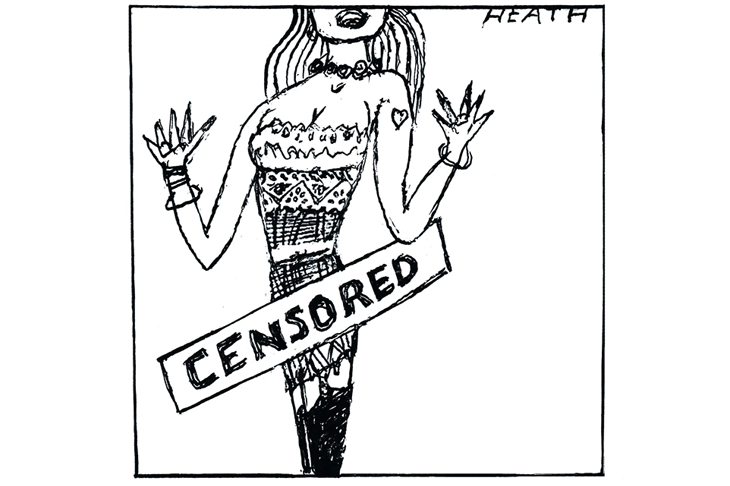There’s a scene in the recent film Corsage in which Vicky Krieps, playing the melancholy anorexic Empress Elisabeth of Austria, indulges in an outburst at her maid. As part of the arduous process of getting dressed, she must be encased in an impossibly small corset (the real empress reportedly had a waist of sixteen inches). Krieps snaps at the maid who cannot lace her tightly enough and demands someone else pull the strings to impose such waspish proportions. Watching the scene, you’d be forgiven for thinking that such restrictive undergarments were normal for high-class women in the eighteenth and nineteenth centuries — and therefore expected for any female actor in a period drama. The myths of women swooning from lack of oxygen have taken on a whole history of their own.
Krieps described how her corset plunged her into “deep sadness,” while Simone Ashley — who played Kate Sharma in the second series of Bridgerton — said her costume stopped her from eating and moving. Emilia Schüle, who plays Marie Antoinette in a new PBS drama, said: “It was great preparation for the character because you really suffer.” The corset, and the pain it is supposed to induce, have taken on a feminist angle.
Rumors recently spread of “safety concerns” about the corset, with reports that they might be banned from Netflix and BBC dramas (since denied by both). Regardless, it’s clear that plenty of actors would prefer to keep their own underwear on. But there is a problem here. If the television corset really is as uncomfortable as the actors report, then the costume departments deserve to be fired. Far from being an excruciating, constrictive symbol of female repression, the corset has as nuanced a history as any other item of underwear.
The use of structured undergarments to create the illusion of a narrow waist can be traced back long before whaleboned women in stiff Victorian gowns. In one twelfth-century manuscript, there’s an illustration of a winged demon dressed as a woman, complete with laced “stays” around his torso. By the Elizabethan period, women with slim waists and exaggerated breasts and hips are found in almost every portrait.
Despite the pursuit of a narrow waist, corsets were not meant to be uncomfortable. They would not have pinched or bruised the wearers’ ribs: they would have been custom-made and worn over a chemise to prevent rubbing. Nor was this fashion limited to women. There was an Elizabethan fascination with slim male silhouettes that continued up until the early nineteenth century, with well-to-do men often wearing corsets, including dandies like Beau Brummell (not to mention his convex friend Prinny).
Ironically, the Regency period in which Bridgerton is notionally set may have been the most lax in history in terms of women’s undergarments: the neoclassical line of the “Empire” dress had brought with it an abrupt change. Some women forwent corsets entirely, while others wore shorter undergarments that supported their breasts without cinching their waists.
Perhaps, in its emphasis on its actors being forced to show off preternaturally narrow waists and elevated breasts, the Bridgerton school of corsetry has more in common with Kardashian-era Spanx than with the early nineteenth century.
This article was originally published in The Spectator’s May 2023 World edition.


















